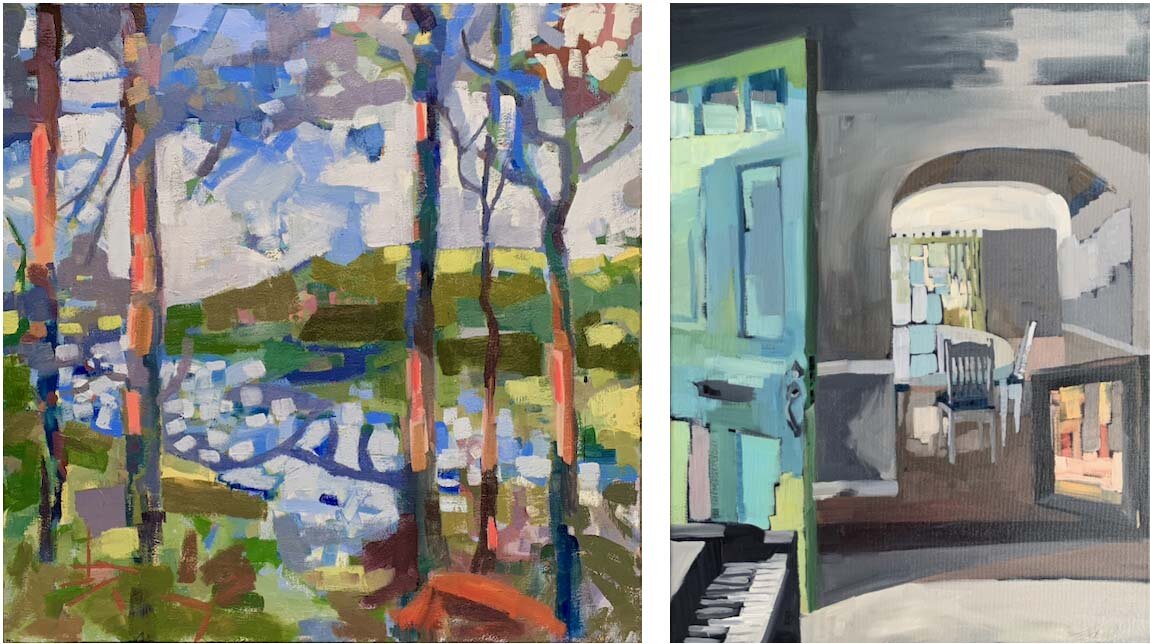The Tea Ceremony
Recently, I've been using visual space in my paintings as a metaphor for states of mind. The early pieces depicted landscapes where trees or plants created a barrier, allowing a view of the landscape beyond. These paintings explore the idea that we often focus on immediate concerns—chores, traffic, hunger, or isolation—without giving these feelings careful attention. Our lives become a series of impulses, thoughts without pause, and we risk missing the broader perspective amid the distractions of daily existence.
“The Obstacle is Also Beautiful” and “Warmer Inside”
I’ve also been painting interior spaces with a similar visual metaphor. The interiors are rendered in desaturated hues, while the windows, doors, and mirrors are filled with colorful, abstract compositions. These vibrant interruptions in the subdued three-dimensional rooms symbolize the world attempting to break through our tendency to take it for granted.
A significant influence on my perspective came from attending a traditional tea ceremony in Kyoto last year. The matcha tea was intensely bitter, followed by small sweet pastries with red bean paste called yatsuhashi. The contrast in taste between the bitter tea and the sweet yatsuhashi made me reflect on the symbolism inherent in the ceremony. Every movement of the tea master, the flower arrangement, and the simple tea instruments and bowls carried meaning.
The tea ceremony encourages us to focus on this precise moment as it unfolds—the company we share, the taste, and the sensory aspects of that unique moment. I try to approach my paintings with a similar mindset. Each color, object, shadow, and play of light carries its own connotations. Just as we were instructed to savor both the bitter and the sweet in the tea ceremony, in my landscapes, I aim to make the obstacles as beautiful as the vistas beyond. In the interiors, my goal is to emphasize the direct experience of color and light available to us in the present moment.
Tea ceremony in Kyoto, yatsuhashi sweets and me drinking the matcha.



